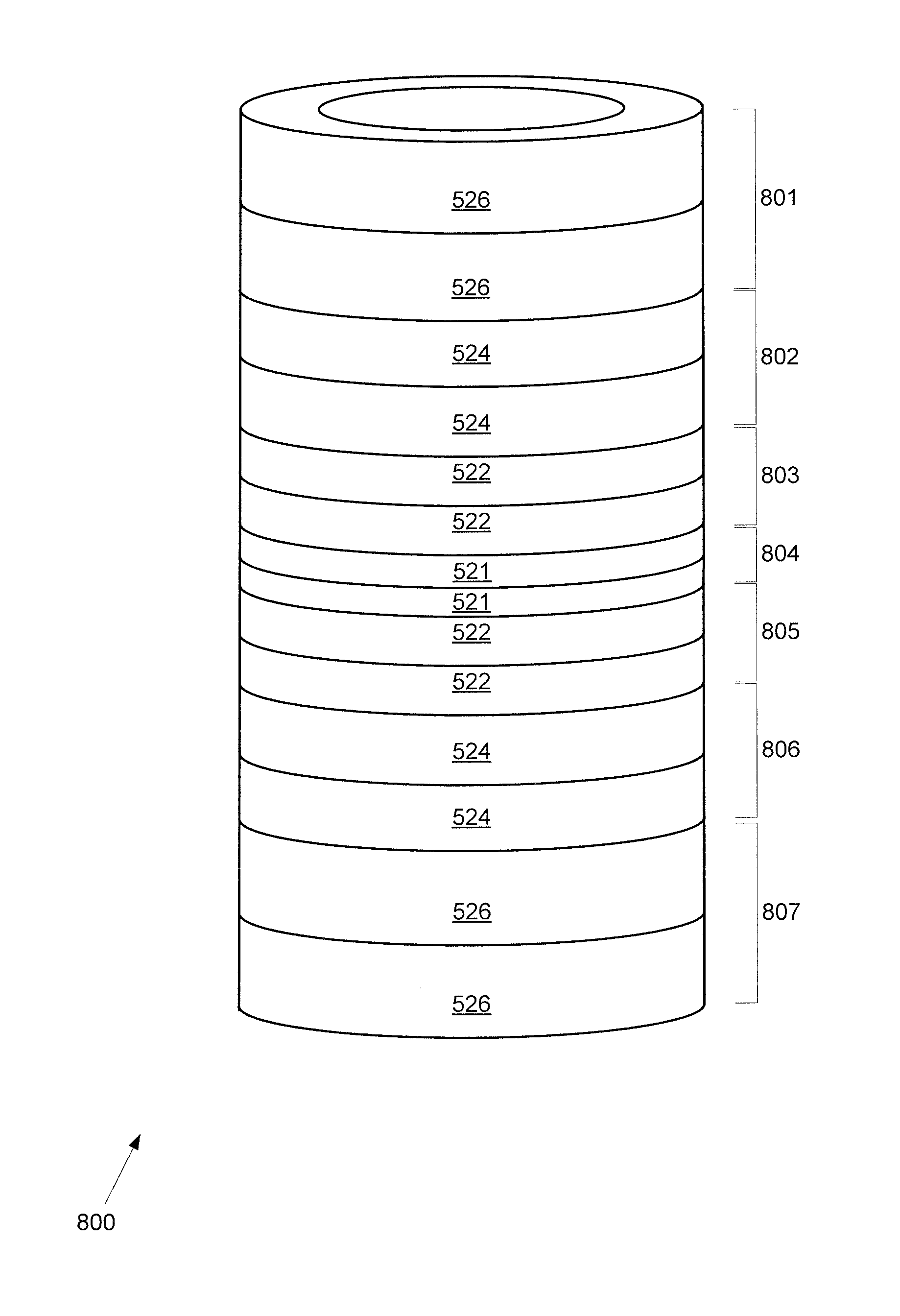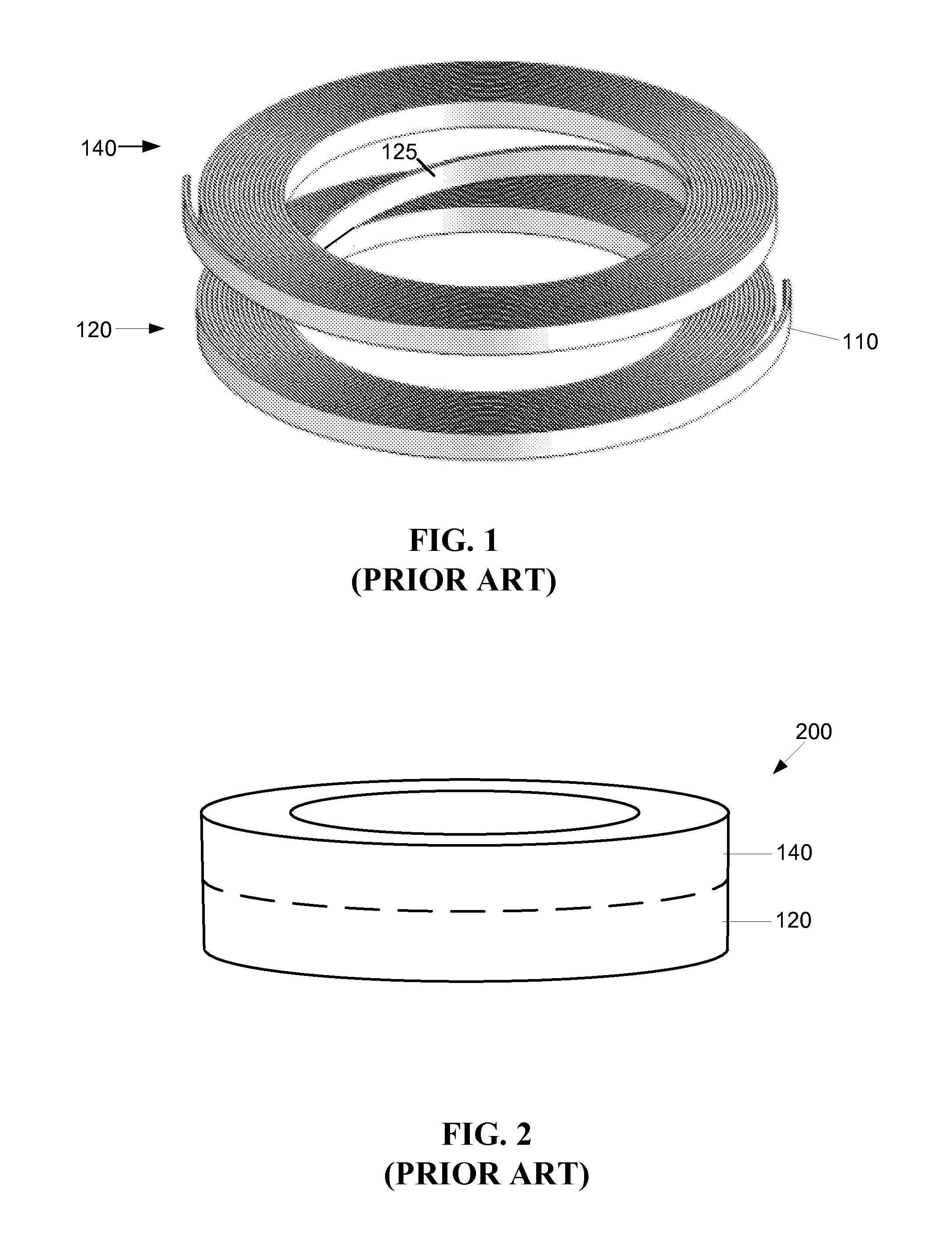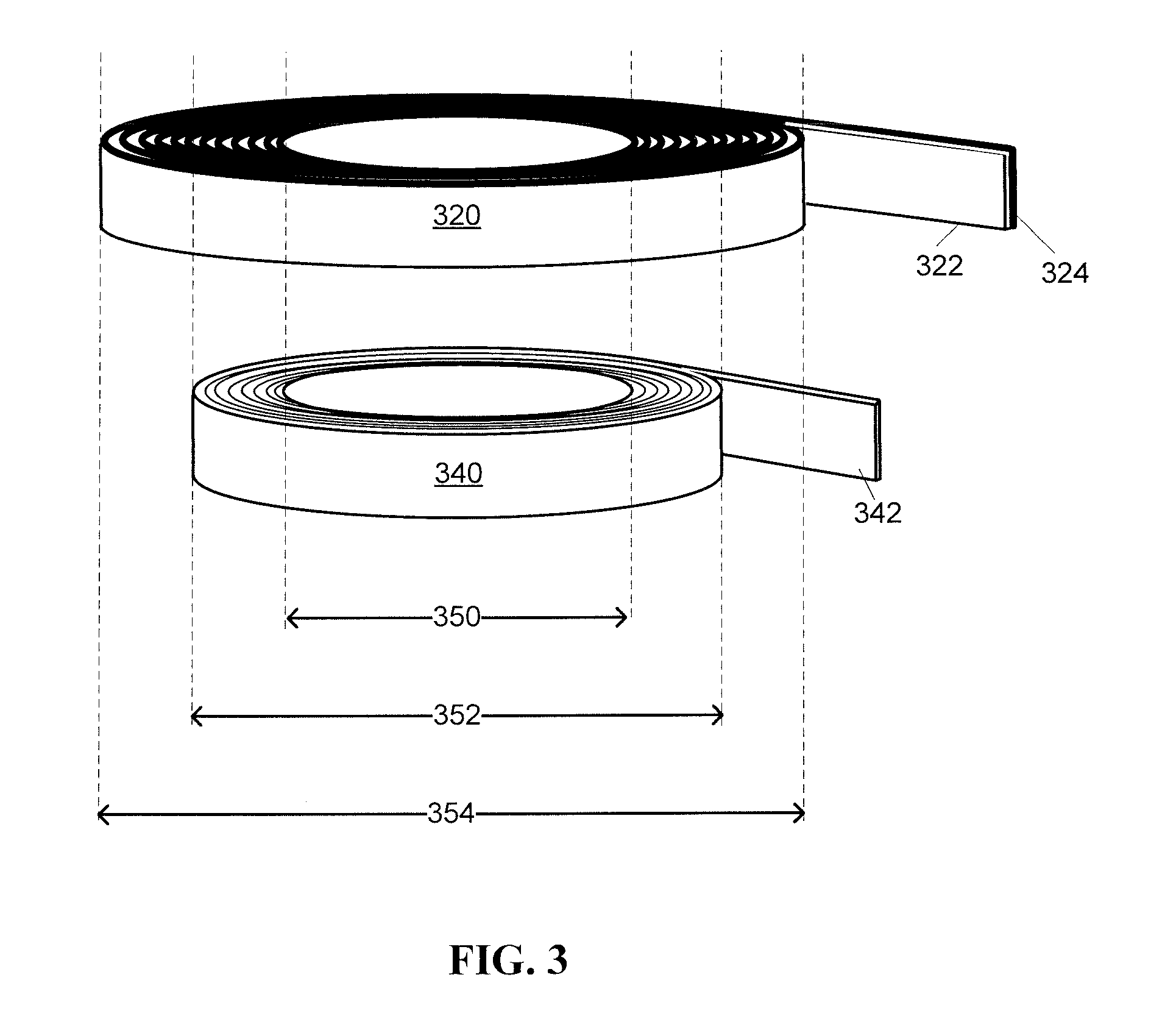No-Insulation Multi-Width Winding for High Temperature Superconducting Magnets
a superconducting magnet, no insulation multi-width technology, applied in the field of electromagnetism, can solve the problems of high susceptibility to quench, large size, low thermal stability,
- Summary
- Abstract
- Description
- Claims
- Application Information
AI Technical Summary
Benefits of technology
Problems solved by technology
Method used
Image
Examples
second embodiment
Testing a Second Embodiment
[0057]FIG. 8 shows a second exemplary embodiment of a No-Insulation (NI) Multi-Width (MW) Magnet Construction including a stack 800 of seven DP coils 801-807 wound with bare (no stabilizer) 2G conductor without turn-to-turn insulation. The conductor width is 2.5 mm for the center DP coil 804 and the conductor width increases to 4.0 mm for the top and bottom DP coils 801, 807. As a result, this MW magnet generates more field, for example, approximately 22% more field than its single-width (SW) counterpart. Table 1 presents key magnet parameters of the second embodiment.
TABLE 1Key magnet parametersParametersValuesHTS wire width [mm]2.5-4.0HTS wire thickness [mm]0.08Stabilizern / aWinding i.d; o.d. [mm]40; 50Total height [mm]50# of DP coils7Turn per DP120lc@ 77 K [A]25Charging time constant [s]0.81Center field @ 1 A [mT]16.5Inductance [mH]18.9
[0058]A charge-discharge test was performed in a bath of liquid nitrogen at 77 K. The charge-discharge test compared spa...
PUM
| Property | Measurement | Unit |
|---|---|---|
| width | aaaaa | aaaaa |
| width | aaaaa | aaaaa |
| width | aaaaa | aaaaa |
Abstract
Description
Claims
Application Information
 Login to view more
Login to view more - R&D Engineer
- R&D Manager
- IP Professional
- Industry Leading Data Capabilities
- Powerful AI technology
- Patent DNA Extraction
Browse by: Latest US Patents, China's latest patents, Technical Efficacy Thesaurus, Application Domain, Technology Topic.
© 2024 PatSnap. All rights reserved.Legal|Privacy policy|Modern Slavery Act Transparency Statement|Sitemap



